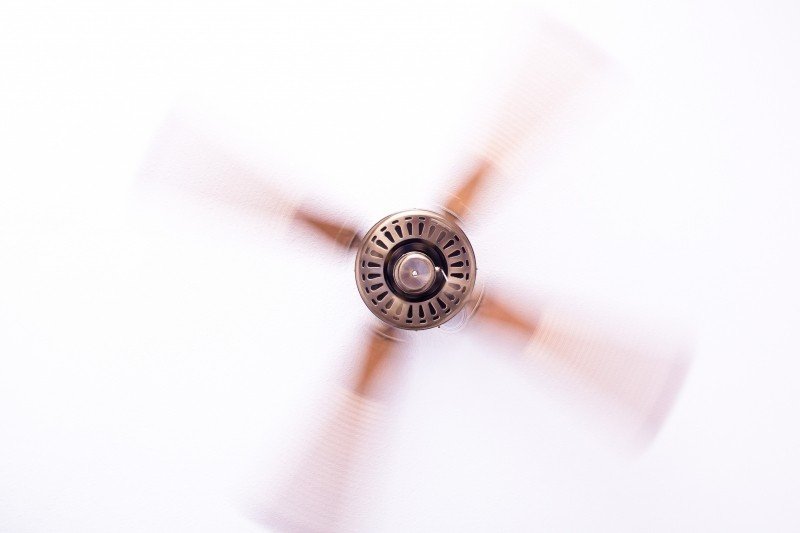Summer is coming, and we can feel the sweat and see the high electric bills already! One way to lower the cost of running your air conditioning unit is also to use your ceiling fan. Ceiling fans circulate cooled air in a room to make people feel cooler. That means you can increase your thermostat by several degrees without causing a noticeable difference in comfort.
Many people don’t realize that you can save money in the summer by running your ceiling fan in conjunction with your air conditioner. With a ceiling fan running, you can feel about 5 degrees cooler. This means you can turn down your AC and lessen its running load. Before you turn your AC on in the shoulder seasons, try running your fan first and see if you can save even more money by avoiding AC for a couple more weeks or most waking hours. A typical central air conditioning unit uses about 3,500 watts of energy when running, while an average ceiling fan running on high uses only about 60 watts.

Which Direction Should Your Ceiling Fan Spin in Summer?
Most fans have a clockwise and counterclockwise setting, usually controlled by a small button or switch near the fan base. Each direction is appropriate for different seasons. However, because fan blades are also angled, we cannot tell you which direction works for which season, on your specific fan. You’ll have to do a small experiment.
Stand beneath your fan and turn it on. If you immediately feel a breeze, that is the summer setting. If you do not immediately feel a breeze, turn off the fan, and look for the small button to run the fan in the opposite direction. Take this opportunity to dust your fan. It’s often an overlooked task, but removing any particulates from the air in your home helps keep the air quality high while also cutting down on internal cleaning of the air ducts.
During summer months, run your ceiling fan on high with the air blowing directly down, as we had just discussed. The fan creates a breeze effect, centralizing the most air movement.
Ceiling Fans Keep People Cool, Not Rooms
What do we mean? Unlike a central AC unit that is cooling your home, a fan is creating a cooling effect. Fans will not lower the temperature; they make you feel cooler by circulating the air. A fan is like a gentle breeze, but if you think about it, your furniture doesn’t benefit from that feeling, only you do. That means when you leave a room, turn off the fan to save on your electric bill.
Using Box Fans
Using box fans during hot summer months is a great idea; however, several factors determine which way your box fan should face. If you are using one box fan, choose the fan direction based on the indoor and outdoor temperatures. If the temperature outside your window feels cooler, you should situate the fan so that the air is blowing into your room. Usually, this is the case later in the evening, throughout the night, and early morning. Conversely, once the day heats up, and the temperature outside is warmer, turn the fan to face the outside, allowing it to suck the room’s warm air out, instead of drawing in additional hot air. Opening another window or door opposite the box fan will also improve circulation by creating a cross breeze throughout the room.
If you have two box fans available, you can create a cross-ventilation effect in your room. Place the box fans in open windows on opposite sides of the room. One fan should be facing inward, and the other should face the outside. This combination allows one fan to pull fresh air in, while the other fan draws out the stale warm air inside your home.
Stay Cool This Summer
No matter which way your fan is facing, the main way to stay cool this summer is to ensure your air conditioning unit is working correctly. Give us a call before the weather heats up. Call before 6 PM for same day service.






